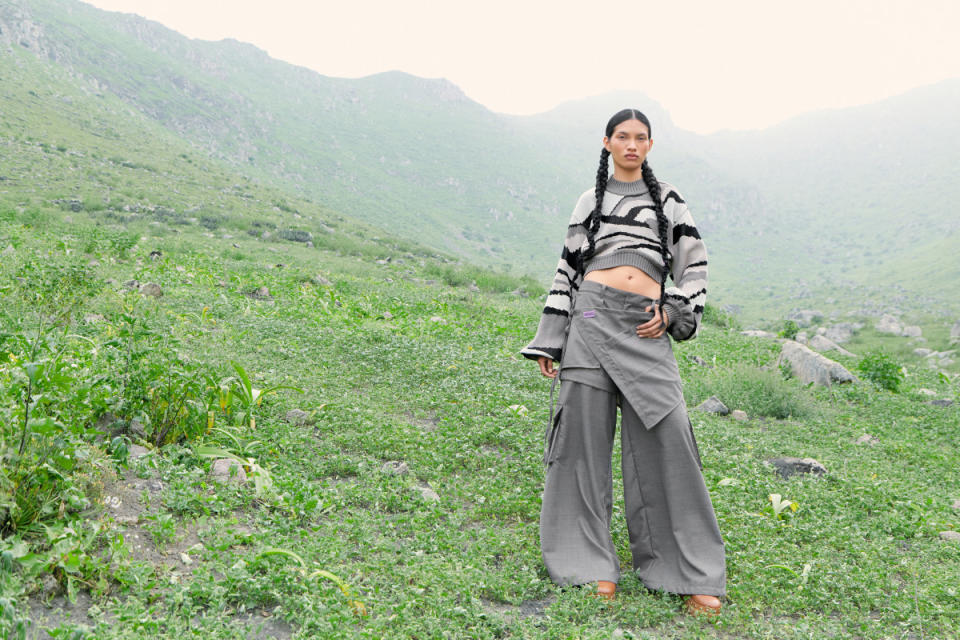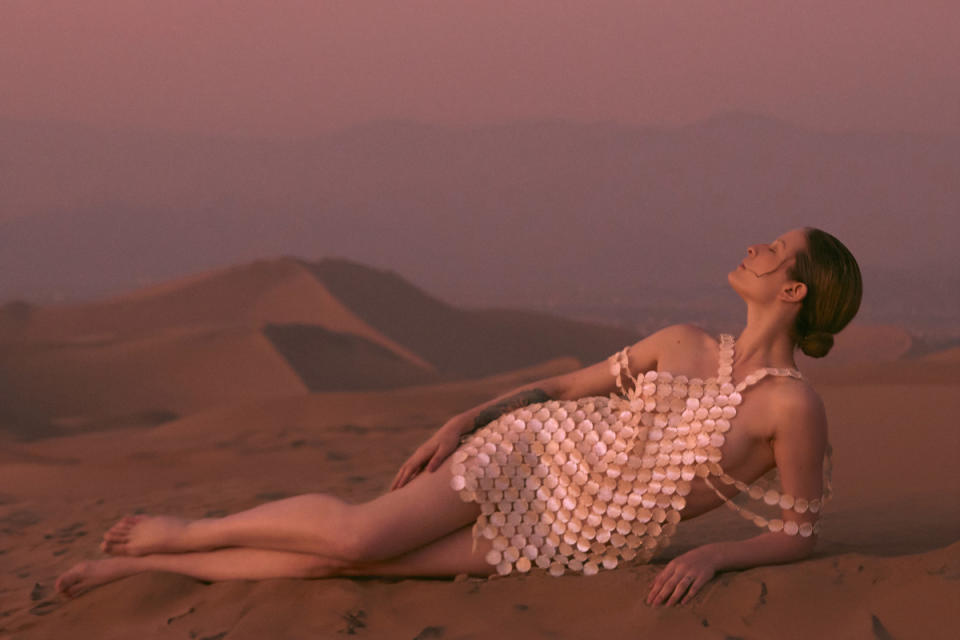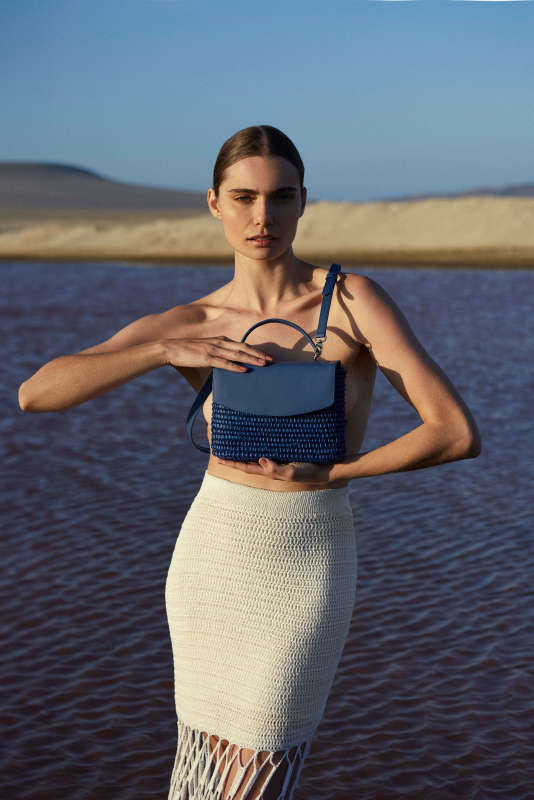The Peruvian Designers Championing Textile Innovation and Modernity
When it comes to fashion's favored metropolises, whole continents are looked over — but, as we know, many cities in Asia, Africa and South America are bustling with creativity and local industry.
Look at what's happening in Peru, the home to pima cotton production and the world's largest population of alpacas, the adorable camelid whose fibers provide some of the coziest sweaters ever. The country's leading independent designers not only champion homemade textiles, but they also bring unique perspectives to these traditions and build businesses around ideas of sustainability, modularity and extending the life cycle of your clothes.
Ahead, meet six of such fashion creatives (who are all Lima-based, coincidentally), who trend curious about innovative materials and weave regional myths into the threads of their pieces.
Annaiss Yucra (A.Y)

Photo: Jorge Anaya/Courtesy of Annaiss Yucra
There's something immediately striking about an Annaiss Yucra (also dubbed A.Y) garment — you're drawn in by the jagged shapes of its bright prints, then taken by the softness and comfort of their construction and materiality. The brand was founded in 2018 by the Central Saint Martins-educated designer of the same name, who grew up in her family's textile workshop.
Each collection is built around a thoughtful theme, like resistance and revolution, and incorporates more tangible motifs, like the retama flower.
"It's a flower that grows 5,000 meters above the sea — it grows in adversity: Where the retama grows, nothing else grows," she says. "It's an allegory for [Peruvian] people."
Despite proximity and access to Peru's large alpaca industry, Yucra usually opts out of using the animal fiber: "I work with plants. I love working with recycled fabrics and combining them with cotton," she says. "At the end of the day, it's about those commitments to good practices."
Prices range from $140 to $650, with the average garment coming it at around $300.
Kero

Photo: Courtesy of Kero
Leaning on alpaca fibers and pima cotton, Mariella Gonzales' Kero puts a spotlight on handmade craft and artisanal techniques through its multi-colored fringe skirts, airily crocheted pieces and azure jacquard prints.
"The design language of Kero reflects the energy of Peru's mountains, the rhythm of the Pacific Ocean and the mystique of the Amazon," Gonzales says of her brand, which she founded in 2001. "Each garment is a work of love, meticulously made to be unique with special details, vibrant colors and excellent quality."
Kero tends to release two collections each year, in the spring and fall. Available to shop on its own e-commerce and on Faire, items range in price from $35 to $730, with the average item costing about $200.
Ana.G
Creatively led by Ana Guiulfo, the (basically) eponymous brand has been marrying graphic prints with hand-painted motifs that bring an artsy feel to refined silhouettes since 2005, when it started out in Miami before expanding to Lima. The result is vibrant, but elegant — think a boned-bodice dress boasting a two-toned illustration and intricate handbags woven by local artisans.
Prices range from $80 to $800, though the average piece sits at around $400.
Delosantos

Photo: Jorge Anaya/Courtesy of Delosantos
Created in 2019 by Victor Montalvo and Danilo Martinez, Delosantos revels in a contrast between the natural and fantastical: fish-scale sequins magnified to cover a dress, trompe l'oeil gowns mimicking the female form, very on-trend moon bags. Beyond seasonal stories, the brand puts a big focus on materials — for example, it uses hemp denim and latex made from the Amazonian Shiringa tree, for their "superior performance" and to "showcase the diverse material alternatives" Peru offers, per the brand.
Prices start at $80 for a scarf and go up to $1,080 for an embellished gown.
Amarena

Photo: Courtesy of Amarena
Amarena is an accessories-forward brand that works primarily with straw across totes, moon bags, satchels and more. Founder Mapi Casafranca has spoken about how crucial Peru's culture and crafts have been to her label, which launched in 2018. Beyond using natural fibers, she's also incorporated local artisanal traditions into the collection, through weaving and natural dyeing techniques. She's also expanded the scope of the product offering, introducing toquilla straw earrings, crocheted dresses and even a course on how to make macramé handbags.
Available on Amarena's site and at Equal Hands, the average bag costs just more than $200.
Fringe

Photo: Henry Rumi/Courtesy of Fringe
Designed by Lucy Barandiaran and launched in 2019, Fringe by Knit Couture prioritizes comfort and embraces boldness: As she puts it over e-mail, "beauty, romance, art and craftsmanship" lie at the heart of her looks.
"When I design a collection, I try to bring a modern edge to knitwear design with a lot of attention to detail," she says. "I love to experiment with lots of different techniques, whether it be by machine or by hand, with a strong emphasis on color. I also try to create pieces that are distinctive and recognizable that can be worn for years to come."
Barandiaran utilizes alpaca yarns and pima cotton — a way of showing pride for her Peruvian heritage and the region's textiles. Plus, she says, alpaca "shows color like no other fiber."
Via Fringe's site, tops often cost just more than $100; more detailed pieces can be upwards of $600.
Disclosure: PromPerú paid for Fashionista's travel and accommodations to attend Peru Moda Deco.
Want the latest fashion industry news first? Sign up for our daily newsletter.

